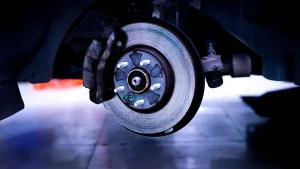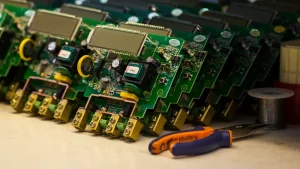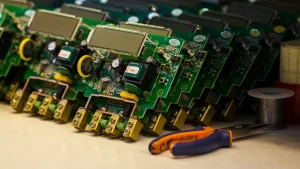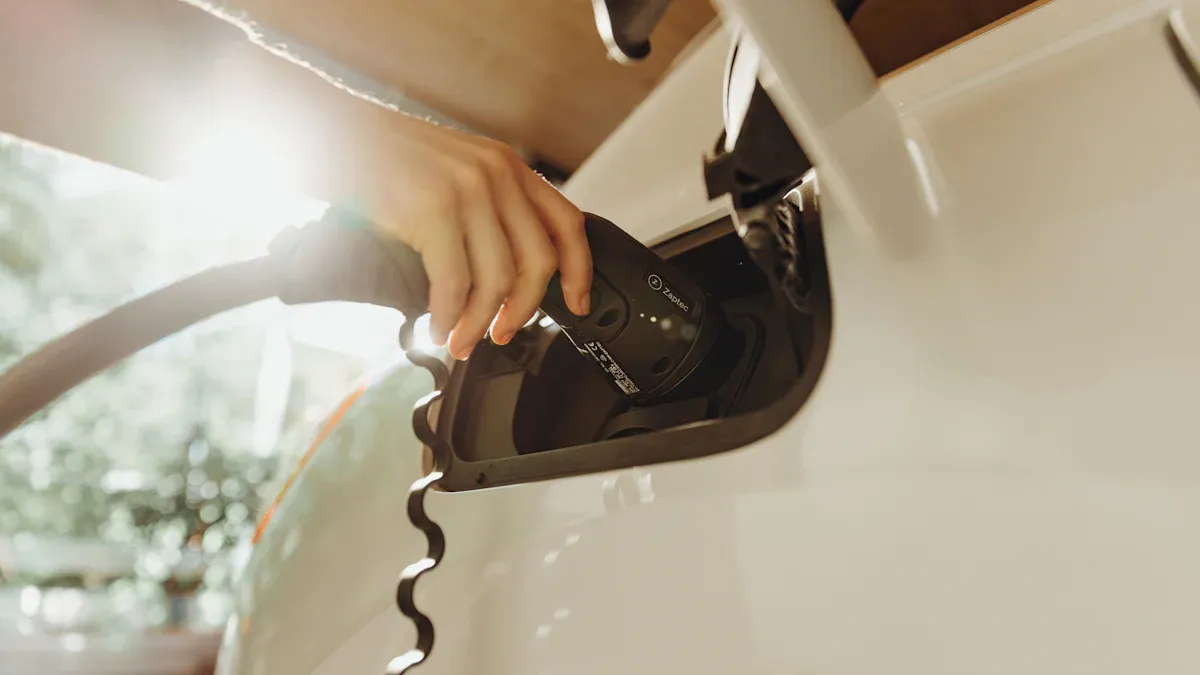
Electric vehicle (EV) adoption is surging globally, with states like California reporting EVs accounting for 25% of new car sales. However, EV charging ports face significant risks from corrosion and wear. Corrosion-resistant solutions, such as CVD Coating, including CVD TaC Coating Technology and CVD SiC Coating, ensure durability by reducing material degradation and overheating risks, safeguarding charging infrastructure. The implementation of cvd tac coating is essential for enhancing the longevity of these critical components.
Key Takeaways
- CVD Coating keeps EV charging ports safe from rust and damage.
- Using CVD Coating lowers repair costs and makes chargers last longer.
- CVD Coating is stronger and works better than older methods in tough conditions.
Challenges Facing EV Charging Ports
Corrosion: Causes and Impact on EV Charging Ports
Corrosion poses a significant threat to EV charging ports. Exposure to moisture, salt, and pollutants accelerates the degradation of metal components. Over time, this leads to reduced conductivity and increased resistance, which can compromise charging efficiency. Ports located in coastal or industrial areas face heightened risks due to high humidity and airborne contaminants. Corrosion not only affects performance but also increases maintenance costs, as damaged components require frequent replacement. Advanced protective solutions, such as CVD Coating, play a crucial role in mitigating these risks by forming a durable barrier against corrosive elements.
Wear and Tear: How Frequent Use Affects Charging Ports
Frequent use of EV charging ports results in mechanical wear and tear. The constant plugging and unplugging of charging cables cause physical stress on connectors, leading to gradual degradation. High-traffic charging stations experience accelerated wear, increasing the likelihood of component failure. The table below highlights the associated costs of maintaining and repairing these ports:
| Cost Type | Description |
|---|---|
| Routine Maintenance and Inspection Costs | Regular inspections and minor repairs incur ongoing expenses, influenced by location and usage frequency. |
| Replacement and Repair Expenses | Damaged components, such as cables, require replacement. Costs vary depending on the charger model and extent of damage. |
| Preventative vs. Reactive Maintenance Costs | Preventative maintenance reduces long-term expenses but involves upfront costs. Reactive maintenance is often more expensive and disruptive. |
Limiting the use of DC fast chargers can help reduce wear, as these chargers place additional strain on components.
Environmental Factors Contributing to Vulnerability
Environmental conditions significantly impact the durability of EV charging ports. High humidity accelerates corrosion, while extreme temperatures cause material expansion and contraction, leading to structural weaknesses. Dust and debris can obstruct connectors, further reducing efficiency. Locations with heavy rainfall or snow require additional maintenance to prevent water ingress. These factors highlight the importance of robust protective measures, such as CVD Coating, to enhance the resilience of charging infrastructure.
The Role of CVD Coating in Protecting EV Charging Ports
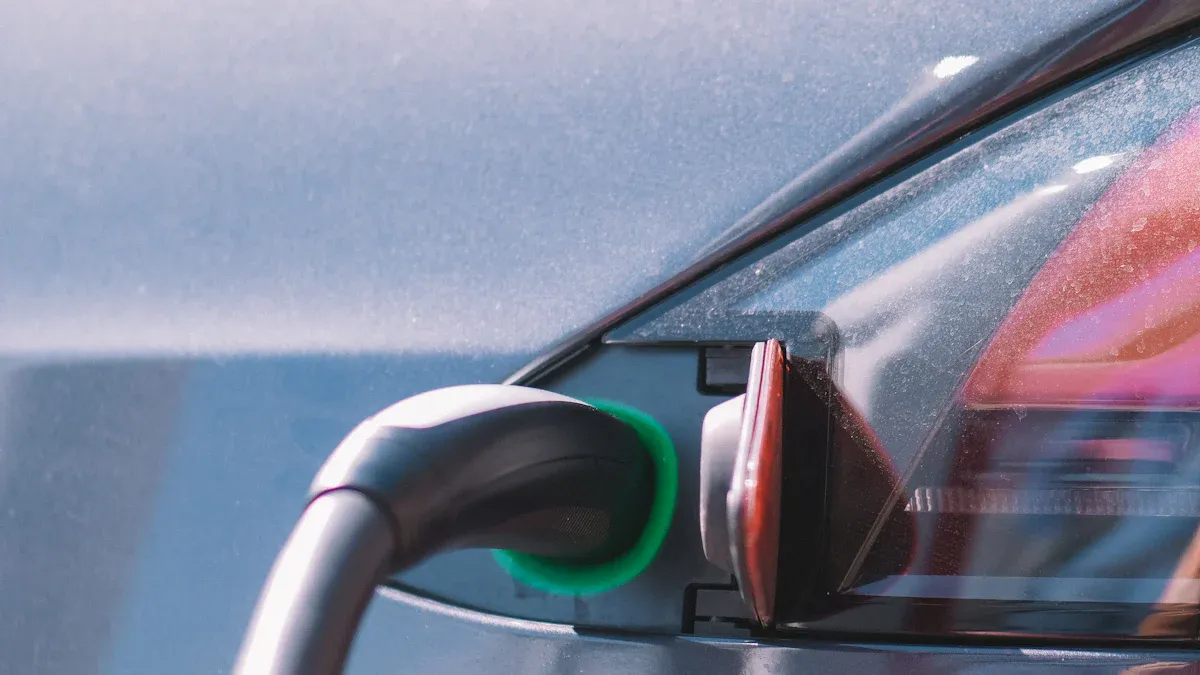
How CVD Coating Works: A Technical Overview
CVD Coating, or Chemical Vapor Deposition Coating, involves depositing a thin, protective layer onto a substrate through a chemical reaction. This process occurs in a controlled environment where gaseous reactants interact with the surface of the material. The result is a uniform, high-purity coating that adheres strongly to the substrate. For EV charging ports, this technology creates a robust barrier against environmental stressors. The coating’s molecular structure enhances its resistance to corrosion and wear, ensuring long-term durability. By forming a seamless layer, CVD Coating minimizes vulnerabilities that could lead to material degradation.
Benefits of CVD Coating for Corrosion and Wear Resistance
CVD Coating offers several advantages for protecting EV charging ports. Its exceptional corrosion resistance shields metal components from moisture, salt, and pollutants. This protection reduces the risk of conductivity loss and ensures consistent performance. The coating also provides superior wear resistance, preventing damage caused by frequent use. Unlike traditional methods, CVD Coating maintains its integrity under extreme conditions, such as high temperatures or heavy mechanical stress. These benefits translate to lower maintenance costs and extended service life for charging infrastructure.
Comparison with Traditional Protective Methods
Traditional protective methods, such as paint or electroplating, often lack the durability required for EV charging ports. Paint can chip or peel, exposing the underlying material to corrosion. Electroplating, while effective, may not provide uniform coverage, leaving weak points vulnerable. In contrast, CVD Coating delivers a consistent, high-quality finish that outperforms these methods. Its ability to withstand harsh environments and mechanical stress makes it a superior choice for safeguarding critical components in EV charging systems.
Real-World Applications of CVD Coating
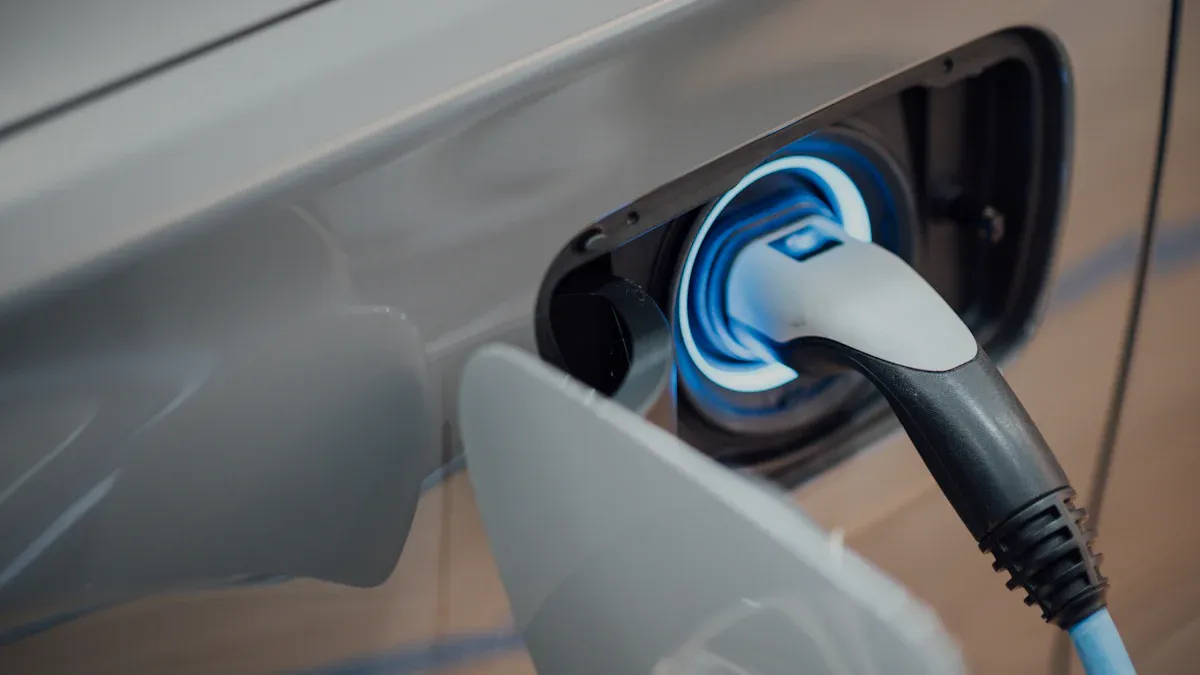
Success Stories in EV Charging Infrastructure
CVD Coating has revolutionized the durability of EV charging ports in real-world applications. Charging stations in coastal regions, where salt and humidity accelerate corrosion, have reported significant improvements in performance after adopting this technology. For example, a major EV charging network in Europe implemented CVD Coating on its connectors, reducing maintenance costs by 30% over two years. Similarly, high-traffic urban stations have benefited from the wear resistance provided by this coating, ensuring uninterrupted service despite heavy usage. These success stories highlight the transformative impact of CVD Coating on the reliability of EV infrastructure.
Ningbo VET Energy Technology Co.’s Contributions to CVD Coating Innovations
Ningbo VET Energy Technology Co. has emerged as a leader in advancing CVD Coating solutions. The company specializes in producing high-quality coatings tailored to the unique challenges of EV charging ports. By leveraging cutting-edge technology, Ningbo VET Energy Technology Co. has developed coatings that offer superior resistance to corrosion and wear. Their commitment to innovation has positioned them as a trusted partner for EV infrastructure providers worldwide. Through continuous research and development, the company ensures that its solutions meet the evolving needs of the industry.
Future Trends in CVD Coating for the EV Industry
The future of CVD Coating in the EV industry looks promising. Researchers are exploring advanced materials to enhance coating performance further, such as nanostructured layers for improved durability. Automation in the coating process is also gaining traction, enabling faster and more cost-effective production. As EV adoption grows, the demand for robust charging infrastructure will drive innovation in CVD Coating technology. Companies like Ningbo VET Energy Technology Co. are expected to play a pivotal role in shaping these advancements, ensuring that EV charging ports remain reliable and efficient.
CVD Coating technology has transformed the protection of EV charging ports, ensuring durability and performance in demanding environments. Ningbo VET Energy Technology Co. leads the industry with advanced TaC coating solutions. These coatings enhance thermal resistance, wear protection, and corrosion resistance, making them indispensable for reliable EV infrastructure. Partnering with Ningbo VET Energy Technology Co. empowers businesses to future-proof their charging systems with cutting-edge innovations.
FAQ
What makes CVD Coating superior to traditional protective methods?
CVD Coating provides uniform coverage, exceptional durability, and resistance to corrosion and wear. Unlike paint or electroplating, it withstands extreme conditions without compromising performance.
Can CVD Coating be applied to all EV charging ports?
Yes, CVD Coating can be customized for various materials and designs, making it suitable for most EV charging port components.
How does CVD Coating impact maintenance costs?
CVD Coating reduces maintenance costs by extending the lifespan of charging ports. Its durability minimizes the need for frequent repairs or replacements.

